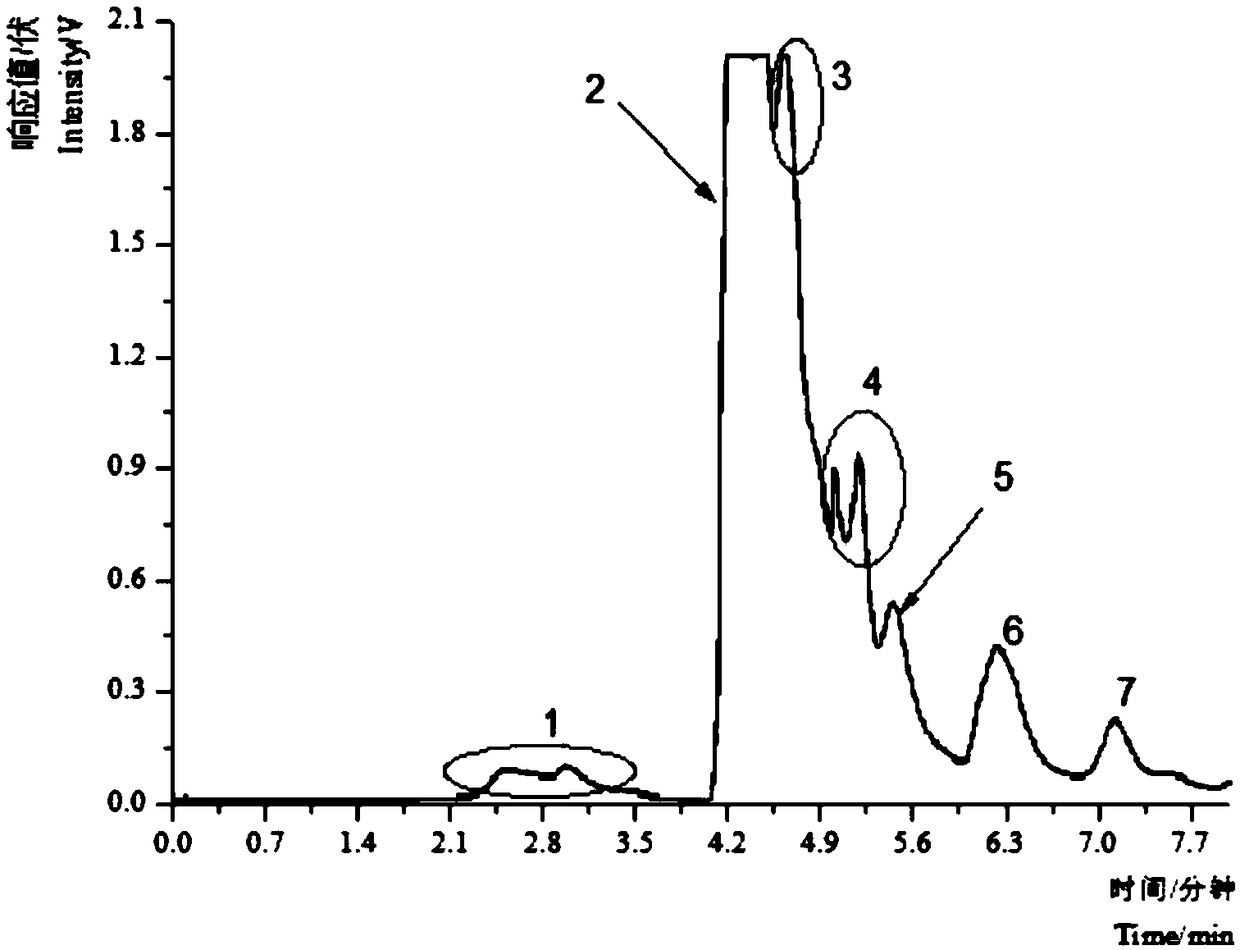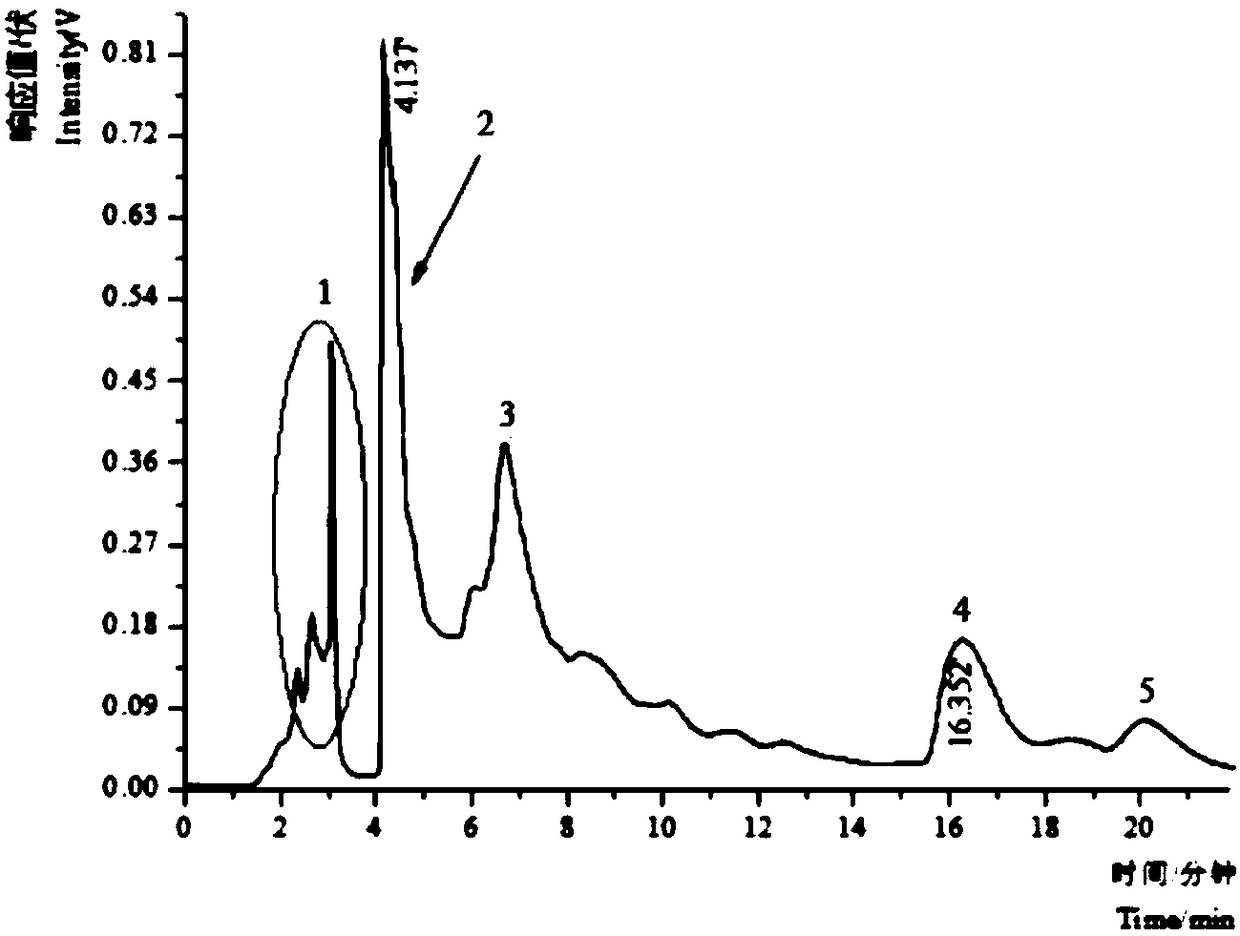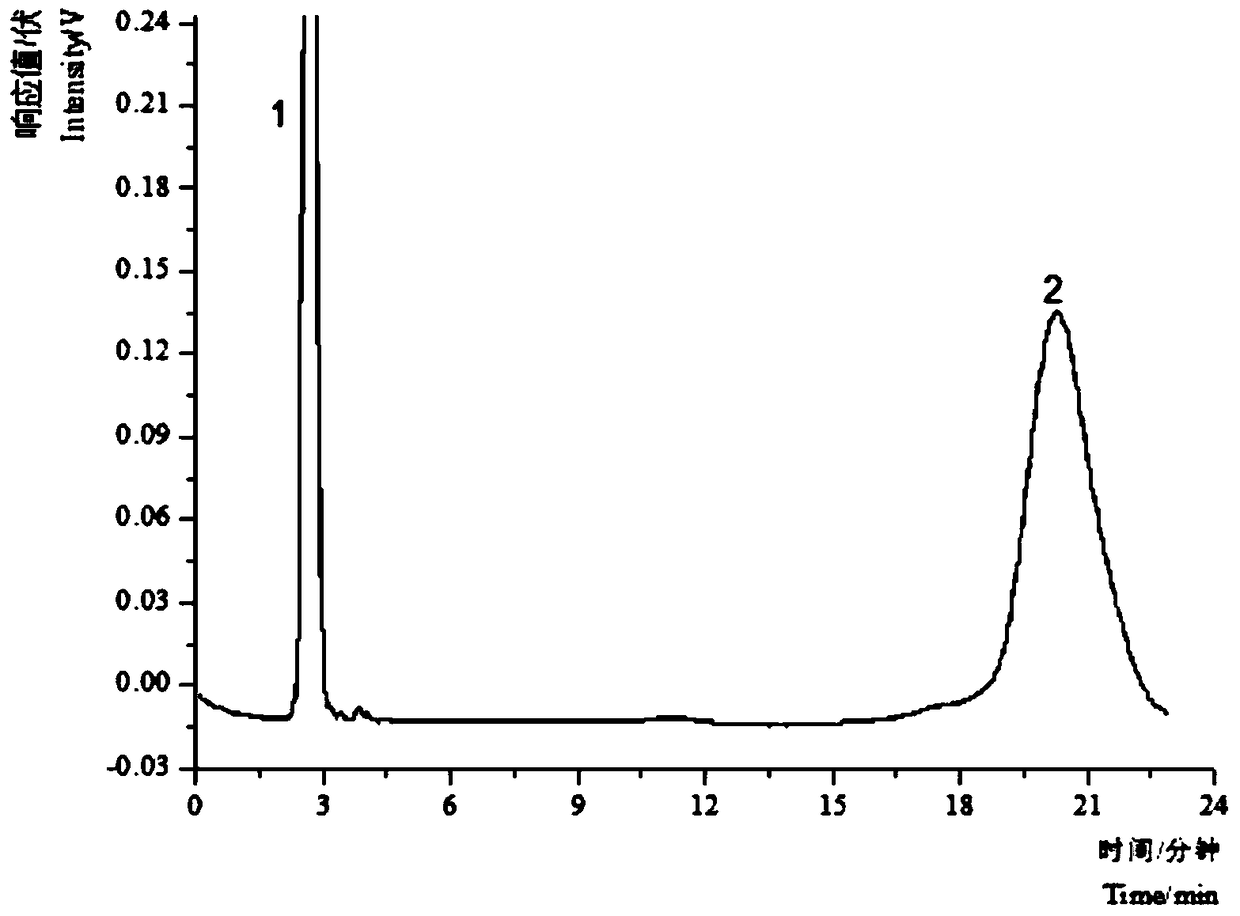Method for extracting kaempferol galactose compound from camellia semiserrata Chi
A technology for galactose and kaempferol, which is applied in the field of extracting kaempferol galactose compounds, can solve problems such as insufficient research, and achieve the effects of simple extraction method and high extraction purity
- Summary
- Abstract
- Description
- Claims
- Application Information
AI Technical Summary
Problems solved by technology
Method used
Image
Examples
Embodiment 1
[0050] The tea fruit of Nanshan tea is dried, shelled, and the cake produced after removing the oil by physical pressing method is dried and properly crushed to obtain Nanshan tea cake. Ultrasonic leaching was performed with 50% ethanol aqueous solution at 60°C for 3 times, each 2h, with a solid-liquid ratio of 1:4 (m / v), and then filtered and combined to obtain an extract. Then, the extract was concentrated and extracted with an equal volume of n-butanol to obtain an extract, which was then diluted 20 times with water to obtain a sample solution.
[0051] The purpose of shelling and degreasing is to maximize the extraction yield and reduce the interference in the separation process. Appropriate feedstock handling methods also help to avoid loss of target compounds.
[0052] The model of the macroporous resin is selected as D101 type, first soak the D101 macroporous resin with ethanol, and then pack the column (column volume BV 1 10L), rinse with ethanol and water in turn un...
Embodiment 2
[0058] The tea fruit of Nanshan tea is dried, shelled, and the cake produced after removing the oil by physical pressing method is dried and properly crushed to obtain Nanshan tea cake. Ultrasonic leaching was performed twice with 60% ethanol aqueous solution at 70°C for 2 hours each time, with a solid-liquid ratio of 1:2 (m / v), and then filtered and combined to obtain an extract. Then, the extract was concentrated, extracted with an equal volume of n-butanol to obtain the extract, and then diluted 22 times with water to obtain the sample solution.
[0059] The model of the macroporous resin is selected as D101 type, first soak the D101 macroporous resin with ethanol, and then pack the column (column volume BV 1 10L), rinse with ethanol and water in turn until there is no ethanol smell, can be detected with an alcohol meter, and the reading is less than 5. Slowly add the sample solution to the macroporous resin chromatography column, and then use 6 times BV in turn. 1 The vo...
Embodiment 3
[0064] The tea fruit of Nanshan tea is dried, shelled, and the cake produced after removing the oil by physical pressing method is dried and properly crushed to obtain Nanshan tea cake. Ultrasonic leaching was carried out with 55% ethanol aqueous solution at 65°C for 4 times, each time for 2 hours, and the material-liquid ratio was 1:4 (m / v), and then filtered and combined to obtain the extract. Then, the extract was concentrated and extracted with an equal volume of n-butanol to obtain an extract, which was then diluted 18 times with water to obtain a sample solution.
[0065] The model of the macroporous resin is selected as D101 type, first soak the D101 macroporous resin with ethanol, and then pack the column (column volume BV 1 10L), rinse with ethanol and water in turn until there is no ethanol smell, can be detected with an alcohol meter, and the reading is less than 5. Slowly add the sample solution to the macroporous resin chromatography column, and then use 6 times ...
PUM
 Login to View More
Login to View More Abstract
Description
Claims
Application Information
 Login to View More
Login to View More - R&D
- Intellectual Property
- Life Sciences
- Materials
- Tech Scout
- Unparalleled Data Quality
- Higher Quality Content
- 60% Fewer Hallucinations
Browse by: Latest US Patents, China's latest patents, Technical Efficacy Thesaurus, Application Domain, Technology Topic, Popular Technical Reports.
© 2025 PatSnap. All rights reserved.Legal|Privacy policy|Modern Slavery Act Transparency Statement|Sitemap|About US| Contact US: help@patsnap.com



